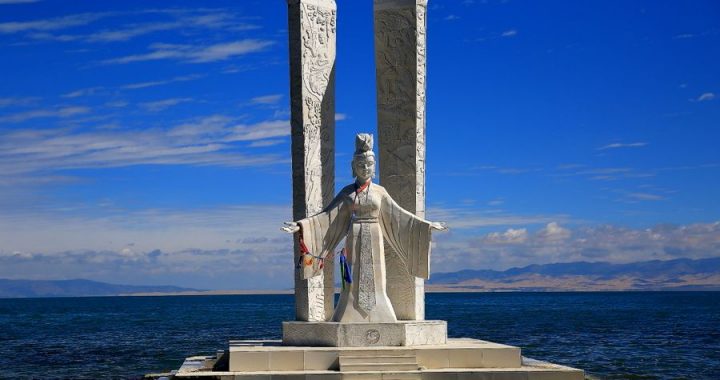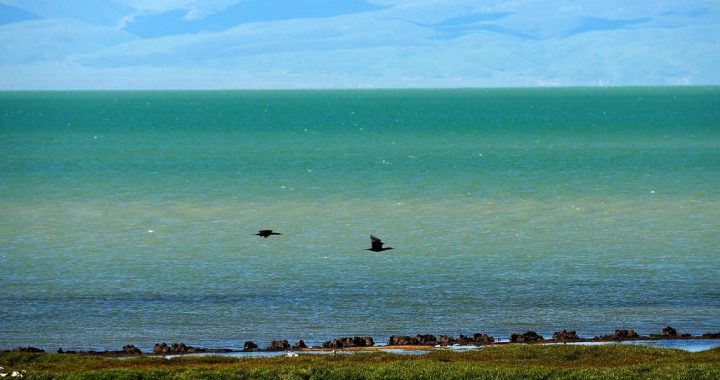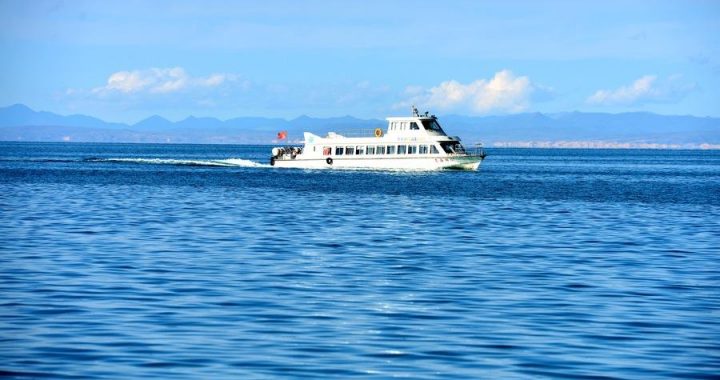qinghai lake kumbum monastery
4 min readEvery region in China has at least one or two don’t miss destinations, and Qinghai Lake (qinghai hu) and Kumbum Monastery fit the bill for Xining. While not actually in the city, both can be reached conveniently with local transportation or the help of a travel agent and can both be seen in one long day trip.
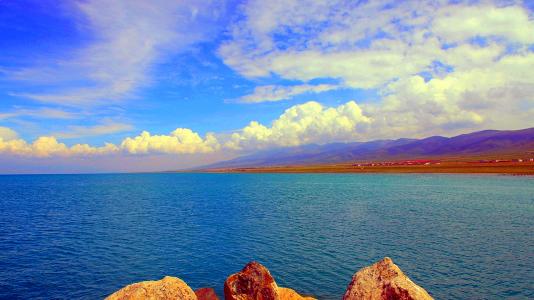
A pilgrim gives the prayer wheels a spin.
Qinghai Lake, the largest saltwater lake in China, is truly a spectacular sight. At an rolling grasslands that make up the Qinghai-Tibet Plateau. Ethnic Tibetan nomads living in tents can be seen scattered about in the summer when they come down from higher elevation to graze their yaks on the lush green grass surrounding the lake. If you’re looking for an authentic Tibetan experience, this is a great place to find it.
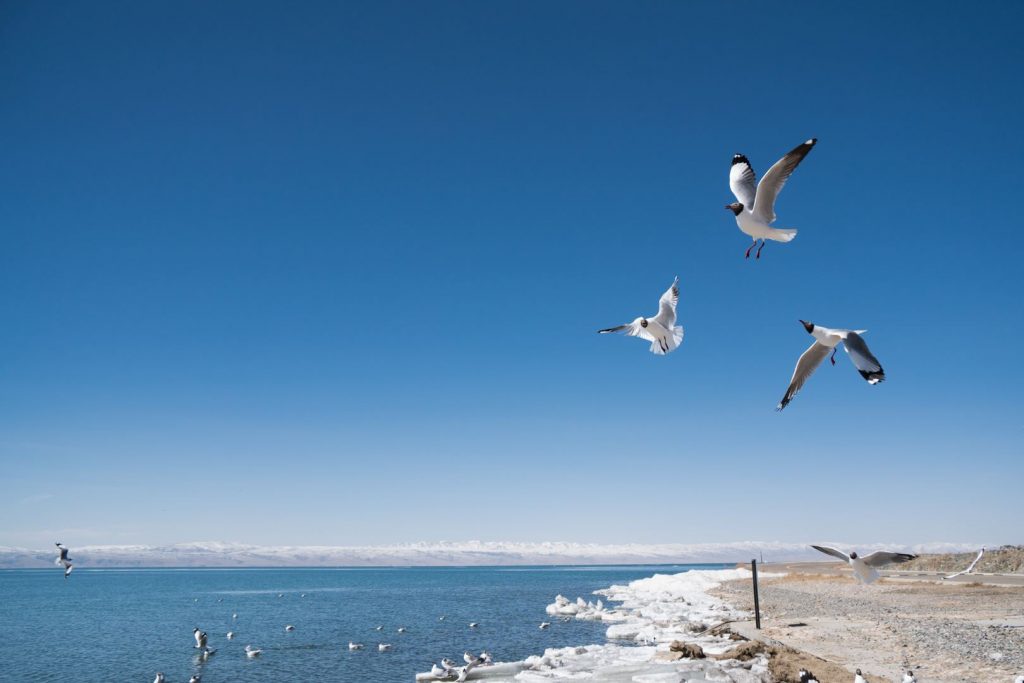
Heading west from Xining, the road immediately begins climbing as you ascend the Qinghai-Tibet Plateau. The road to the lake winds its way through stark and tranqui valley scenery while surro rounded by terraced fields of rapeseed and wheat. About an hour and a half from Xining is the Sun Moon Pass(riyue shan). It offers splendid views of the grasslands and is a great spot to snap a few pictures. Continuing from there, the scenery is of classic plateau grasslands and the lake soon appears as a watery, albeit salty, blue oasis. A couple hours and possibly stop for lunch at the Tibetan tents later you arrive at 《niao dao)While the scenery and cultural experience around the lake are worth the trip alone, year, this island become the main attraction, Bird Island. From March through June every comes a breeding ground for tens of thousands of rare migrating birds.
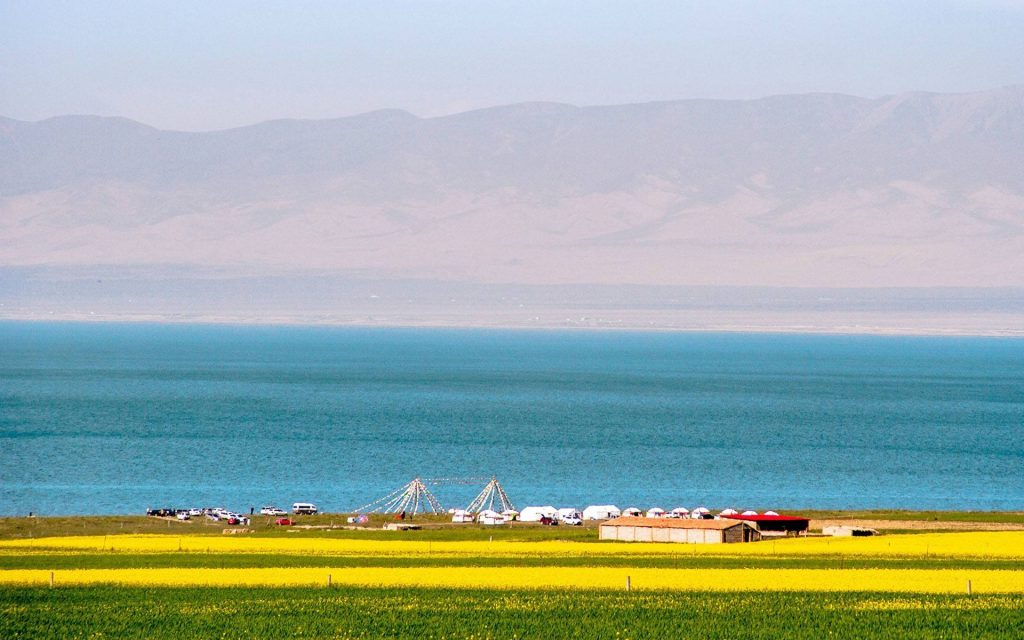
The trip costs RMB 120 and usually includes stops at all the sites of interest along the way. Entrance to the park is RMB 35. Usually the tour is booked as a day trip, but you also can arrange overnight accommodatic through a travel agent.
The intricate and beautiful yalk butter sculptures of the Kumbum Monastery.The Qinghai Lake trip generally includes a stop at Xining’s other gem, Kumbum Monastery (ta’er si). Located just1 99 miles(30k) from Xining, this monastery is one of the most important Yellow Hat sect monasteries in the world. Construction of this building egan. In 1577 at the birthplace of Tsong Khapa, founder of the Yellow Hat sect of Tibetan Buddhism. The monastery offers an authentic glimpse of the Tibetan Buddhist religious adition,butter sculptures in the Hall of Butter Sculpture (suyouhua yuan ) a Tibetan art specialty. The monks are quite friendly and regularly invite tourists in for a cup of yak butter tea or a bowl of tsamba (zanba crushed roasted barley. Taking a hike up the valley lrya. The small shops outside the monastery are a great place to pick up surrounding scenery Tibetan jewelry and other trinkets but be aware that bargaining is a must. Entrance to the monastery is RMB 35 and English speaking guides are available for a little extra.

Quotes
“I never in my wildest dreams imagined I’d find a place as culturally diverse as Xining in China.
“One day I had breakfast with my Han tour group leader, sipped yak butter tea in the afternoon with Tibetan monks and ate roast lamb in the evening in a Muslim tent “I came to see the sites but ended up falling in love with the people.
The Tibetan Antelope fine ntury hunting Prized for their fine wool, the Tibetan antelope population was ravaged in the 20th century by overhunting and Pantholops hodgsoni is found only on the Qinghai-Tibet Plateau “the roof of the world. These graceful animals ar 4 feet tall and the males have 20-inch (50 cm) horns giving them a similar appearance to a gazelle. The antelope grazes 14, 760 feet (4, 500 m) above sea level and sports coat that has evolved to deal with the extreme cold.

However, their coat is also their curse. The fiber is a fifth of the thickness of human hair and was named “shahtoosh, or “king of wools” by Persians, and “ring shawls” made from the wool ha for over a century.
Shahtoosh’s popularity led to the wholesale slaughter of the antelope and numbers dropped from around a million at the turn of the century to less than 75, 000 in the mid-1990’s when environmei1 poacheats lobbied governments to enforce an international trade ban on the material. Unfortunately, the animals are poached and skinned in Tibetan areas and then smuggled into the politically unstable Kashmir region for manufacture. Until governments are able to cooperate and jointly tackle the issue of poaching and smuggling, the best that can be done is preventing international shipments.other animals with similarly fine wool and recent reports suggest the gene Scientists have been working on breeding other animals with similarly fine wool and recent reports suggest the genes of goat from Ngari Prefecture in Tibet may be the antelope’s salvation.
